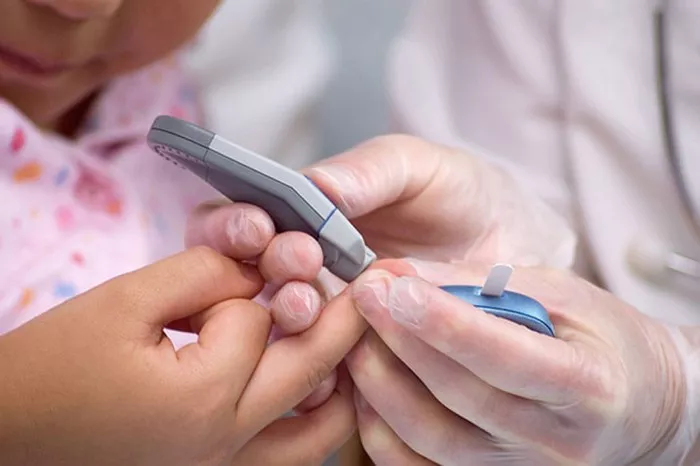Type 1 diabetes, often referred to as juvenile diabetes, is a chronic condition in which the pancreas produces little to no insulin. Insulin is a hormone necessary for sugar (glucose) to enter cells to produce energy. Unlike type 2 diabetes, which can be influenced by lifestyle factors, type 1 diabetes is an autoimmune condition where the body’s immune system attacks insulin-producing cells in the pancreas. The onset of type 1 diabetes is usually sudden and often occurs in children, teenagers, or young adults, although it can develop at any age. Early diagnosis is crucial for managing the condition and preventing serious complications.
The Three Most Common Symptoms of Undiagnosed Type 1 Diabetes
Recognizing the early symptoms of type 1 diabetes is essential for prompt treatment. Here, we will explore the three most common symptoms: increased thirst (polydipsia), frequent urination (polyuria), and unexplained weight loss. Understanding these symptoms can aid in early diagnosis and improve outcomes for those affected by this condition.
Increased Thirst (Polydipsia)
Understanding Polydipsia
Increased thirst, medically termed polydipsia, is one of the hallmark symptoms of type 1 diabetes. It is characterized by an unquenchable desire to drink fluids, far exceeding normal thirst levels. This symptom arises due to elevated blood glucose levels, which affect the body’s ability to regulate fluid balance.
The Mechanism Behind Polydipsia
In a healthy individual, the kidneys filter glucose from the blood and reabsorb it into the bloodstream. However, in someone with type 1 diabetes, the lack of insulin results in high blood glucose levels, which overwhelm the kidneys’ capacity to reabsorb glucose. This excess glucose spills into the urine, drawing water with it through osmosis. Consequently, the body loses a significant amount of fluid, leading to dehydration and a strong sensation of thirst. The more a person drinks to quench this thirst, the more they urinate, creating a vicious cycle.
Clinical Presentation
Patients experiencing polydipsia often report:
- Consistently dry mouth and throat
- A persistent need to drink water, even after consuming large amounts
- Preference for cold water due to its immediate refreshing sensatio
- Frequent nighttime awakenings to drink water
Impact on Daily Life
The relentless nature of polydipsia can significantly disrupt daily activities. Individuals may find themselves unable to focus on tasks or sleep through the night without interruption. This constant state of thirst and the accompanying need to drink and urinate can lead to fatigue and irritability.
Frequent Urination (Polyuria)
Understanding Polyuria
Frequent urination, or polyuria, is another primary symptom of undiagnosed type 1 diabetes. It is defined as the production of abnormally large volumes of dilute urine. This symptom is closely linked to polydipsia and is a direct consequence of the body’s attempt to rid itself of excess glucose.
The Mechanism Behind Polyuria
As previously mentioned, high blood glucose levels result in the kidneys filtering out excess glucose into the urine. This process requires a substantial amount of water, leading to increased urine production. The body attempts to compensate for this fluid loss by inducing thirst, but the cycle of drinking and urination persists as long as blood glucose levels remain elevated.
Clinical Presentation
Individuals with polyuria may experience:
- An increased frequency of urination, often exceeding 3 liters per day compared to the normal range of 1-2 liters
- Urine that appears clear or very pale due to its high water content
- An urgent need to urinate, sometimes leading to accidents, especially in children
- Frequent nighttime urination (nocturia), which can disrupt sleep
Impact on Daily Life
Polyuria can have a profound effect on an individual’s quality of life. The constant need to urinate can make it difficult to participate in long meetings, attend classes, or travel long distances without frequent breaks. In children, it can be particularly challenging, potentially leading to embarrassment and social isolation.
Unexplained Weight Loss
Understanding Unexplained Weight Loss
Unexplained weight loss is a critical symptom of undiagnosed type 1 diabetes, especially alarming because it occurs despite normal or increased food intake. This symptom results from the body’s inability to use glucose as an energy source due to lack of insulin.
The Mechanism Behind Unexplained Weight Loss
In type 1 diabetes, the body’s cells cannot access glucose for energy. Instead, the body begins to break down fat and muscle tissues to provide alternative energy sources. This catabolic state leads to significant weight loss, even if the individual maintains a high-calorie diet. Additionally, the loss of glucose through urine further deprives the body of calories.
Clinical Presentation
Patients withunexplained weight loss often present with:
- Rapid and unintentional weight loss over a short period
- Loss of muscle mass and fat stores, leading to a gaunt appearance
- Increased hunger (polyphagia) as the body attempts to compensate for lost calories
- General weakness and fatigue due to muscle wasting and lack of energy
Impact on Daily Life
The physical and emotional toll of unexplained weight loss can be substantial. Affected individuals may feel weak and fatigued, making it challenging to perform everyday tasks. The visible changes in appearance can also affect self-esteem and social interactions.
Other Symptoms to Consider
While polydipsia, polyuria, and unexplained weight loss are the most common symptoms, they are not the only indicators of type 1 diabetes. Other symptoms that may be present include:
Fatigue: Due to the body’s inability to utilize glucose for energy, individuals may feel constantly tired.
Blurred Vision: High blood glucose levels can cause swelling in the lens of the eye, leading to blurry vision.
Slow Healing: Cuts and bruises may take longer to heal due to impaired blood circulation and immune response.
Frequent Infections: High blood sugar levels can weaken the immune system, making individuals more susceptible to infections.
Mood Changes: Fluctuations in blood glucose levels can affect mood and lead to irritability or mood swings.
Diagnosis and Management
Recognizing the symptoms of type 1 diabetes early is crucial for prompt diagnosis and treatment. If any of the symptoms described above are present, it is essential to seek medical attention. Diagnosis typically involves blood tests to measure blood glucose levels, such as:
Fasting Blood Glucose Test: Measures blood sugar after an overnight fast.
Random Blood Glucose Test: Measures blood sugar at any time, regardless of when the person last ate.
Glycated Hemoglobin (A1C) Test: Provides an average blood sugar level over the past two to three months.
Once diagnosed, the primary treatment for type 1 diabetes involves insulin therapy. This can be administered through injections or an insulin pump. Alongside insulin therapy, managing type 1 diabetes includes:
Regular Monitoring of Blood Glucose Levels: To ensure they remain within the target range.
Healthy Diet: Focusing on balanced meals to manage blood sugar levels.
Exercise: Regular physical activity helps improve insulin sensitivity and overall health.
Education and Support: Understanding the condition and having access to support groups and healthcare professionals can improve management and quality of life.
The Importance of Early Detection
Early detection and management of type 1 diabetes are critical in preventing complications. Untreated or poorly managed diabetes can lead to severe complications, including:
Diabetic Ketoacidosis (DKA): A life-threatening condition resulting from extremely high blood sugar and the buildup of ketones in the blood.
Cardiovascular Disease: Increased risk of heart attack, stroke, and other cardiovascular issues.
Nerve Damage (Neuropathy): Leading to pain, tingling, or loss of sensation in extremities.
Kidney Damage (Nephropathy): Potentially leading to kidney failure.
Eye Damage (Retinopathy): Increasing the risk of blindness.
Foot Problems: Due to poor circulation and nerve damage, increasing the risk of severe infections and amputations.
Living with Type 1 Diabetes
Living with type 1 diabetes requires a lifelong commitment to managing the condition. However, with proper care and support, individuals with type 1 diabetes can lead healthy and fulfilling lives. It is important to:
Stay Educated: Keep up-to-date with the latest research and treatment options.
Build a Support Network: Connect with other people with diabetes, support groups, and healthcare professionals.
Adopt a Positive Mindset: Focus on what you can control and make healthy lifestyle choices.
Monitor and Adjust: Regularly check blood glucose levels and adjust insulin, diet, and activity levels as needed.
See also: What are the Causes of Type 1 Diabetes Mellitus
Conclusion
Type 1 diabetes is a serious condition that requires prompt recognition and management. The three most common symptoms of undiagnosed type 1 diabetes—increased thirst (polydipsia), frequent urination (polyuria), and unexplained weight loss—are critical indicators that should not be ignored. Early diagnosis and treatment can significantly improve outcomes and quality of life for those affected by type 1 diabetes. By understanding these symptoms and seeking medical attention when they arise, individuals can take control of their health and effectively manage this condition.
Related topics:
Glucose VS. A1c What’s the Difference
























